Abstract
Fifteen to 20% of premature infants weighing below 1500 g develop variable degrees of acute retrolental fibroplasia (RLF). Approximately 5% of those infants who develop RLF can be expected to become blind. A prospective study was carried out to evaluate if early cryopexy can prevent this blindness. The study showed that, among 533 infants admitted to the neonatal intensive care unit between July 1976 and December 1978, 55 had some degree of active RLF. In 18 eyes of 9 infants in whom the retinopathy progressed beyond active stage II cryopexy treatment was applied to the avascular retina. In all the treated eyes the active retinopathy regressed, and there were no complications due to the procedure. The long-term follow-up showed that in 15 eyes there was good vision and that the remaining 3 eyes had some impairment of vision but were not blind. These results suggest that cryotherapy may prove useful in treating premature infants with RLF who show progression of their active stage, without the danger of further visual loss or complete blindness.
Full text
PDF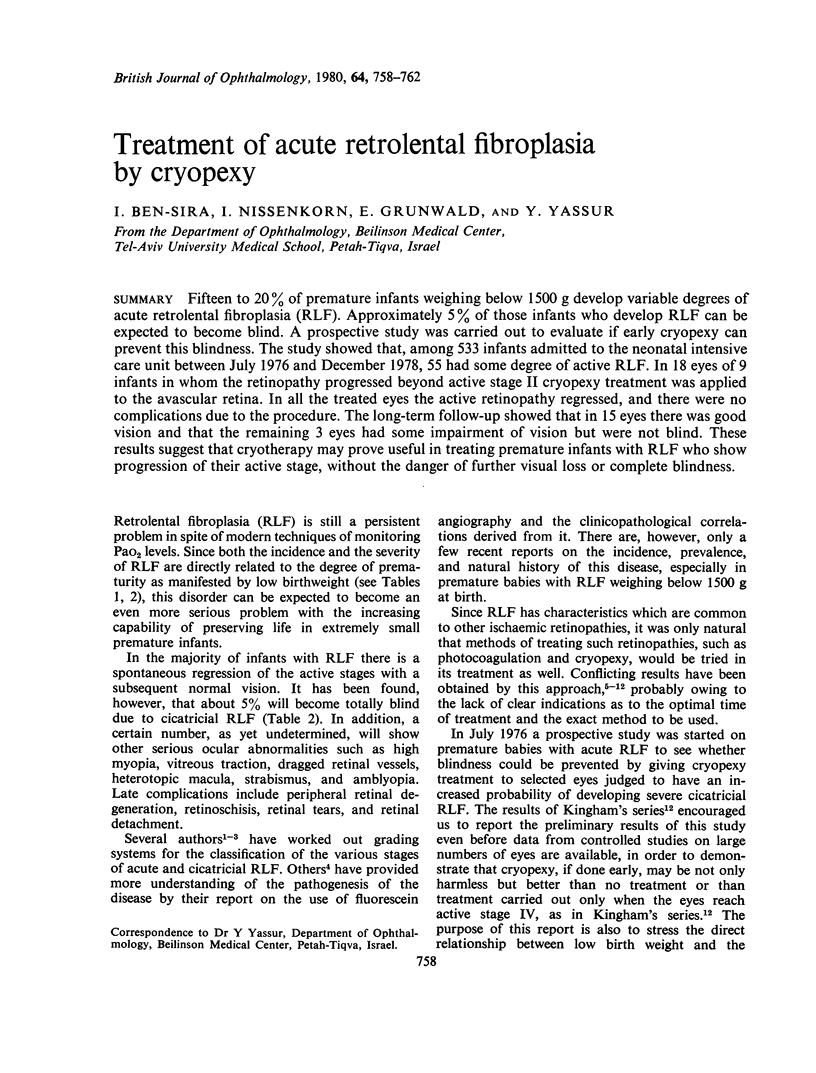
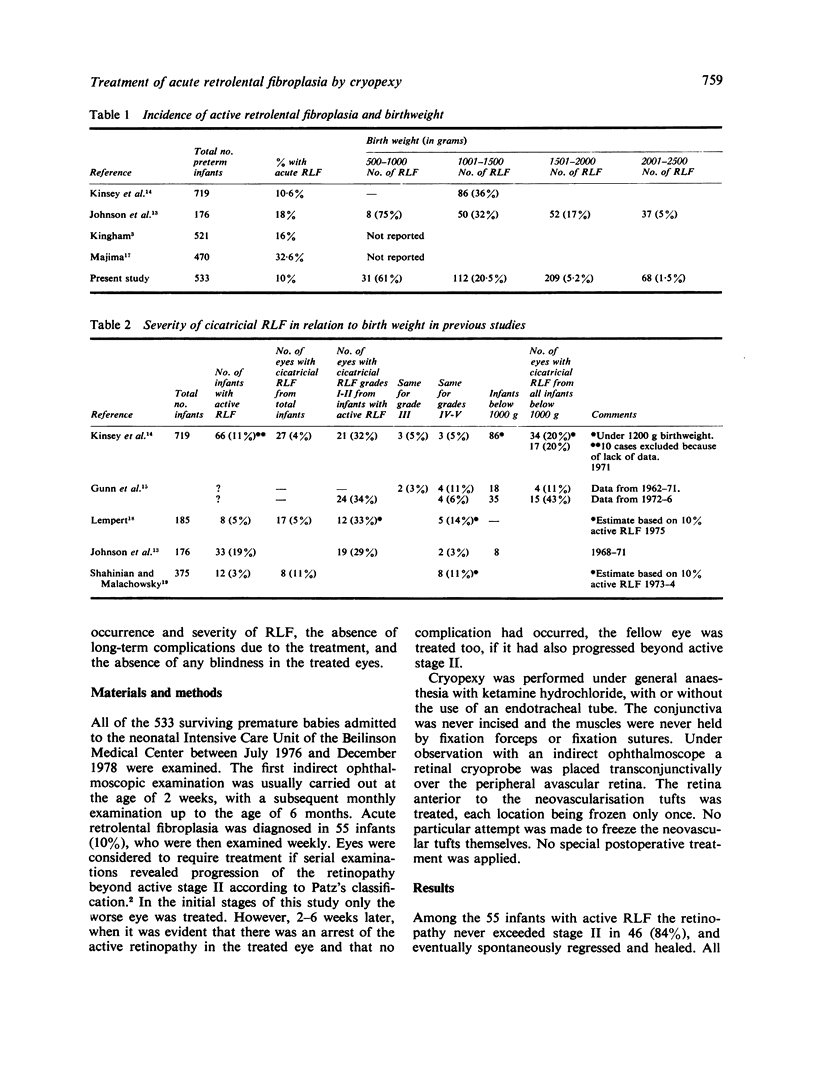
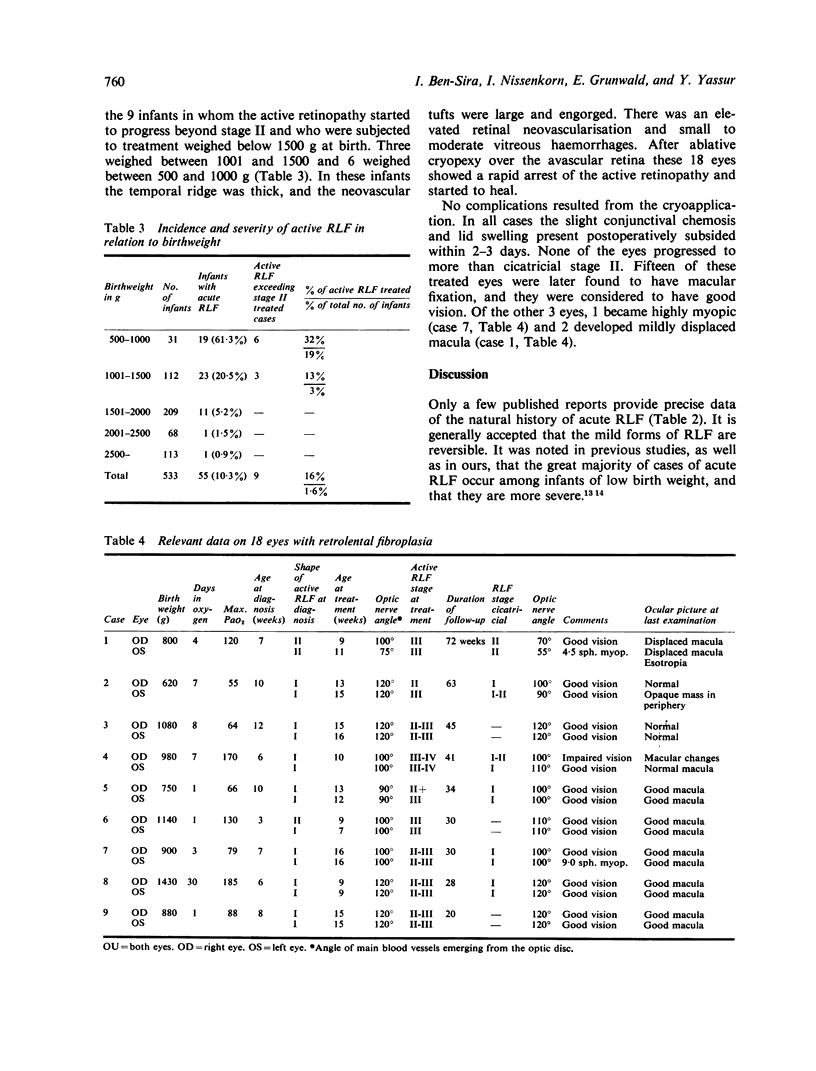
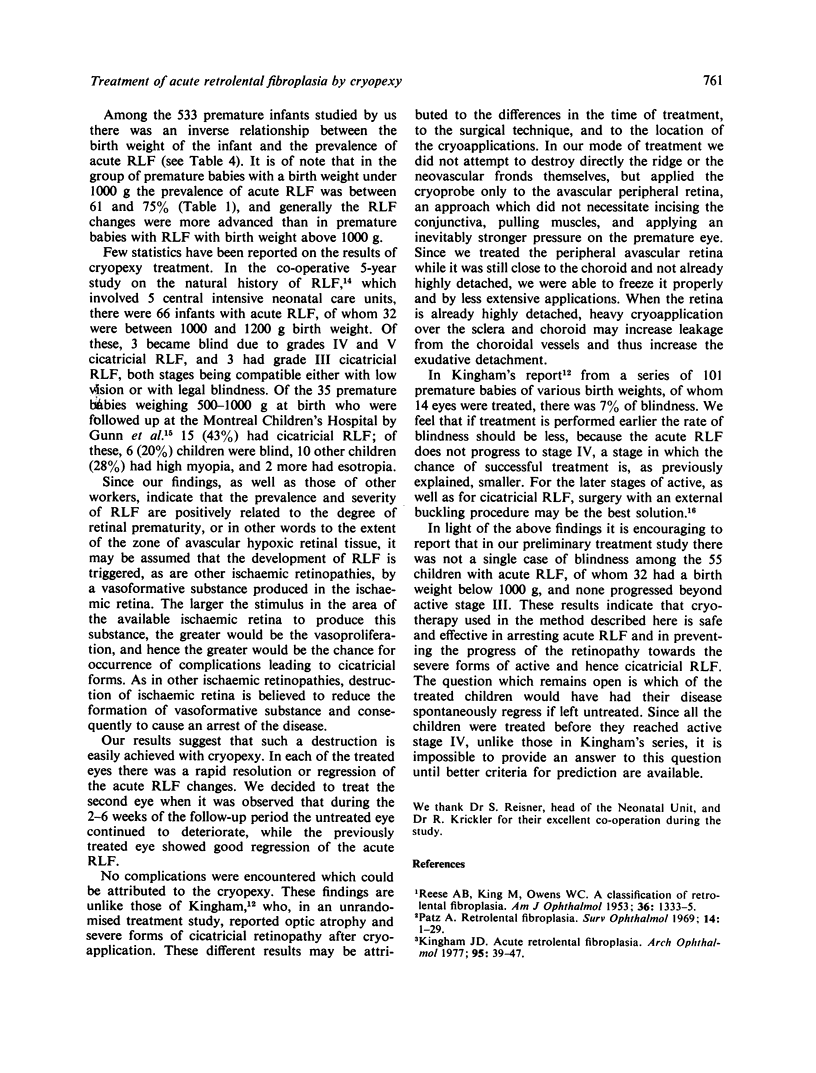
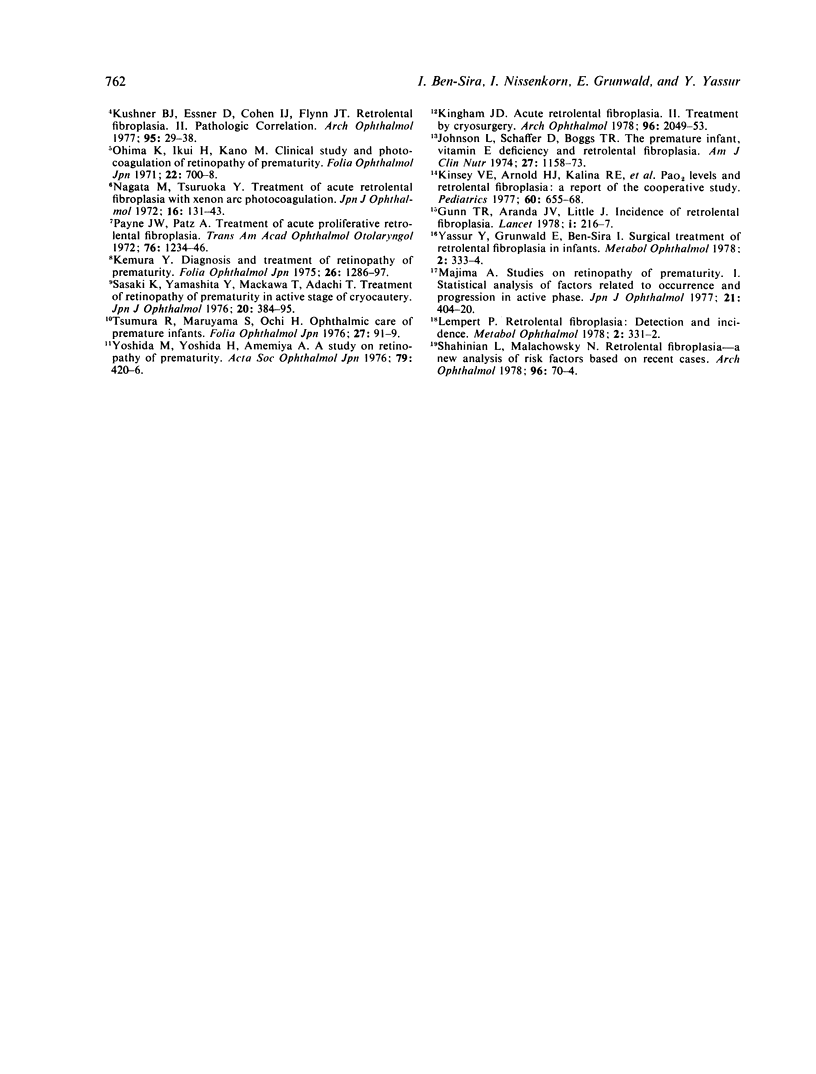
Selected References
These references are in PubMed. This may not be the complete list of references from this article.
- CLASSIFICATION of retrolental fibroplasia. Am J Ophthalmol. 1953 Oct;36(10):1333–1335. [PubMed] [Google Scholar]
- Gunn T. R., Aranda J. V., Little J. Incidence of retrolental fibroplasia. Lancet. 1978 Jan 28;1(8057):216–217. doi: 10.1016/s0140-6736(78)90660-8. [DOI] [PubMed] [Google Scholar]
- Johnson L., Schaffer D., Boggs T. R., Jr The premature infant, vitamin E deficiency and retrolental fibroplasia. Am J Clin Nutr. 1974 Oct;27(10):1158–1173. doi: 10.1093/ajcn/27.8.1158. [DOI] [PubMed] [Google Scholar]
- Kingham J. D. Acute retrolental fibroplasia. II. Treatment by cryosurgery. Arch Ophthalmol. 1978 Nov;96(11):2049–2053. doi: 10.1001/archopht.1978.03910060437008. [DOI] [PubMed] [Google Scholar]
- Kingham J. D. Acute retrolental fibroplasia. Arch Ophthalmol. 1977 Jan;95(1):39–47. doi: 10.1001/archopht.1977.04450010041003. [DOI] [PubMed] [Google Scholar]
- Kinsey V. E., Arnold H. J., Kalina R. E., Stern L., Stahlman M., Odell G., Driscoll J. M., Jr, Elliott J. H., Payne J., Patz A. PaO2 levels and retrolental fibroplasia: a report of the cooperative study. Pediatrics. 1977 Nov;60(5):655–668. [PubMed] [Google Scholar]
- Oshima K., Ikui H., Kano M., Nakama T., Kumano S. [Clinical study and photocoagulation of retinopathy of prematurity]. Nihon Ganka Kiyo. 1971 Sep;22(9):700–707. [PubMed] [Google Scholar]
- Patz A. Retrolental fibroplasia. Surv Ophthalmol. 1969 Jul;14(1):1–29. [PubMed] [Google Scholar]
- Payne J. W., Patz A. Treatment of acute proliferative retrolental fibroplasia. Trans Am Acad Ophthalmol Otolaryngol. 1972 Sep-Oct;76(5):1234–1246. [PubMed] [Google Scholar]


